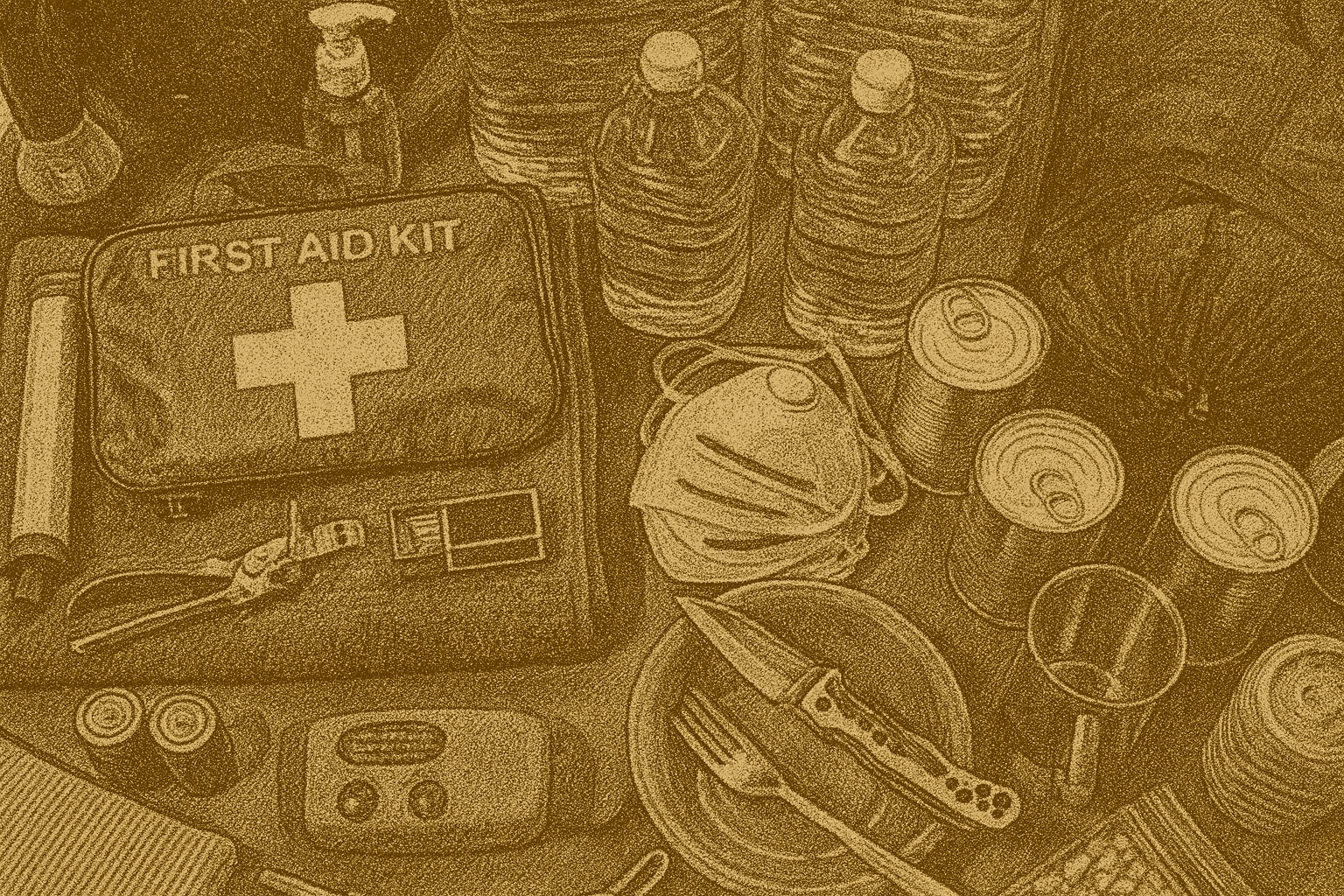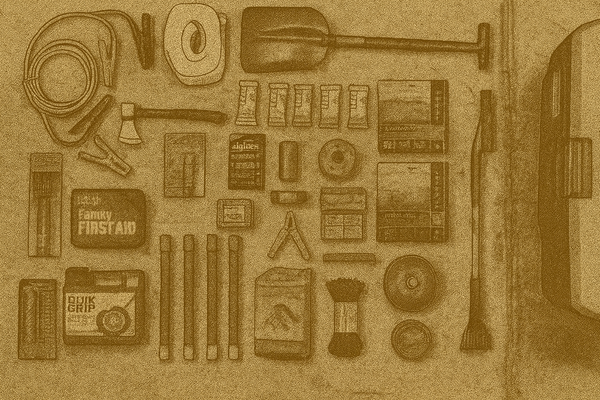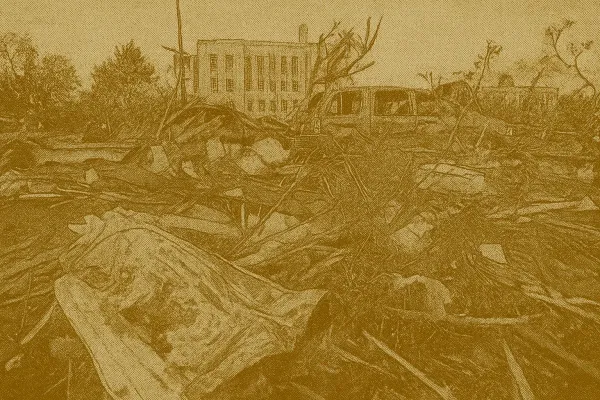Heads up: some of the links in this post are affiliate links. That means if you click and purchase, we may get a commission. It’s how we keep this site running without cluttering it with ads.
When travelling by car, being prepared for unexpected situations is crucial to ensure safety and peace of mind. A well-stocked car emergency kit can make all the difference during breakdowns, accidents, or severe weather conditions. A car emergency kit should contain essential tools, first aid supplies, and items tailored to the specific needs of the driver and environment.
The contents of a kit vary depending on the season and travel plans but generally include jumper cables, a first aid kit, basic tools, water, and non-perishable snacks. Drivers in Canada must also consider items suited for winter conditions, such as thermal blankets and ice scrapers. Having these supplies accessible can help navigate roadside emergencies efficiently.
Building or purchasing a kit that fits one’s vehicle and typical journeys ensures readiness in any situation. Proper storage and regular maintenance of the kit keep it reliable and effective when needed most. This practical preparation is a key step toward safer driving experiences.
Key Takeaways
- A car emergency kit contains essential tools and supplies for unexpected situations.
- Seasonal and travel-specific items improve safety and readiness.
- Regular upkeep and tailored kits ensure optimal emergency response.
What Is a Car Emergency Kit?
A car emergency kit is a collection of essential items designed to assist drivers during roadside incidents or unexpected situations. It typically includes tools for vehicle repair, personal safety equipment, and supplies to manage adverse weather or medical emergencies. Understanding its purpose, the available types of kits, and any legal requirements helps ensure proper preparation.
Definition and Purpose
A car emergency kit is a set of supplies intended to help drivers respond effectively to breakdowns, accidents, or extreme weather conditions. Its primary purpose is to provide immediate assistance and improve safety while waiting for professional help or reaching a safe location.
Common components include water, food, first aid supplies, blankets, and tools like jumper cables or a flashlight. It plays a crucial role in preventing minor issues from escalating by enabling temporary repairs or comfort in adverse conditions. Regular maintenance of the kit ensures items remain functional and up to date.
Types of Car Emergency Kits
Car emergency kits vary based on climate, geography, and individual needs. A basic kit usually contains:
- First aid kit
- Water and non-perishable food
- Flashlight with extra batteries
- Jumper cables
- Multipurpose tool
A winter survival kit adds items like thermal blankets, extra clothing, snow scraper, and ice melt. Drivers in remote areas might include satellite communicators or additional fuel.
Kits can be purchased ready-made or assembled individually. Customization is recommended, tailoring items to personal risk factors such as severe weather or long-distance travel.
Legal Requirements in Canada
Canadian provinces generally do not mandate specific emergency kits in private vehicles, but some recommend or require certain items for commercial vehicles or during certain seasons. For example, winter weather conditions in northern regions may prompt advisories for carrying essentials like ice scrapers, warm clothing, and emergency flares.
It is prudent for all drivers to comply with safety standards suggested by organizations such as the Canadian Automobile Association (CAA). Being prepared aligns with legal responsibilities related to vehicle safety and reduces liability if stranded.
Regular checks and updates of a car emergency kit are encouraged to maintain readiness, especially before winter or long trips.
Essential Items for a Car Emergency Kit
A well-prepared car emergency kit contains specific items that address common roadside issues, injuries, and visibility concerns. Each category serves a critical function to ensure safety, basic repairs, and first aid until professional help arrives.
First Aid Supplies
A comprehensive first aid kit is vital for treating minor injuries and stabilizing more serious wounds until medical assistance is available. Essential components include sterile gauze pads, adhesive bandages in various sizes, antiseptic wipes, and medical tape. Pain relievers, allergy medication, and scissors are also important.
Including disposable gloves and a CPR face shield adds a layer of protection when providing first aid. The kit should be stored in a waterproof container to prevent damage and maintain sterility.
Safety and Visibility Tools
Items that enhance visibility and alert other drivers are crucial when a vehicle is stopped on the roadside. A set of reflective warning triangles and high-visibility vests provide early warnings to oncoming traffic. Flares or LED road flares are effective at night or in low-visibility conditions.

A flashlight with extra batteries and a whistle can assist in signalling for help. It is recommended to include a bright, waterproof poncho to keep the occupant dry, preventing hypothermia or discomfort in adverse weather.
Basic Mechanical Tools
Basic tools allow drivers to manage common mechanical issues without immediate professional help. Jumper cables are essential for battery-related problems. A reliable tire pressure gauge paired with a portable air compressor can help maintain safe tire pressure.
Other helpful tools include a multi-tool or Swiss army knife, a sturdy tow rope or strap, and a lug wrench for changing tires. A compact set of screwdrivers and gloves to protect hands from dirt and cuts complete a practical mechanical toolkit.
Seasonal Considerations for Canada
Car emergency kits must reflect Canada’s diverse weather conditions throughout the year. Drivers need specific items for winter's cold and ice, essentials for summer’s heat and storms, plus adaptable tools for year-round use to stay safe on the road.
Winter Emergency Kit Items
Winter kits should include essentials to handle freezing temperatures, snow, and ice. Key items are a snow brush, ice scraper, and hand warmers to maintain visibility and warmth.
Traction aids, like kitty litter or sand, help if the vehicle gets stuck on icy roads. A fully charged power bank is critical, as phone batteries drain faster in the cold. Including a thermal blanket and extra warm clothing offers protection if stranded.
Other essentials include a shovel for snow removal, emergency food and water, and road flares or a reflective triangle to increase visibility to other drivers.
Summer Emergency Kit Essentials
Summer kits focus on protection from heat, storms, and breakdowns in warmer conditions. Drivers should carry plenty of water to stay hydrated during long waits.
A wide-brimmed hat, sunscreen, and sunglasses provide protection from sun exposure. In case of breakdowns during heatwaves, tools to manage overheating like coolant and a cooling towel are important.
It’s wise to include a battery-operated or hand-crank emergency radio to stay informed during severe weather events like thunderstorms or wildfires. A basic first aid kit is essential for any summer mishaps.
All-Season Adaptations
Every kit should include items useful year-round. These include a flashlight with extra batteries, multi-purpose tools, and jumper cables.
A reflective vest and road flares improve visibility in all conditions. Drivers should always have a map or GPS device that works offline, as cell coverage can be unreliable.
Regularly checking and updating the kit helps to ensure items are in good condition and appropriate for the season. Adapting kits based on travel routes and weather forecasts improves preparedness.
How to Assemble and Organize Your Kit
A well-assembled car emergency kit is compact, easy to access, and clearly organized. Selecting the right container, arranging items for quick retrieval, and using labels or inventories to keep track are essential steps to ensure efficiency during an emergency.
Choosing the Right Container
The container must be sturdy and water-resistant to protect contents from damage. A hard-sided plastic box with a secure lid works well for keeping supplies dry and organised. Some prefer soft-sided bags with multiple compartments for flexibility, but these should still be durable.
Size should match the amount of gear needed without overwhelming vehicle storage space. It is important the container fits securely in your trunk or under a seat to avoid shifting while driving. Handles or straps improve portability, especially if removing the kit is necessary.
Organizing for Accessibility
Items should be grouped by category to save time, such as first aid, tools, or survival gear. Frequently needed items like a flashlight, gloves, or a multi-tool should be placed on top or in external pockets for easy reach.
Using clear zip-lock bags or small boxes inside the main container keeps smaller items from scattering. Heavy or bulky items belong at the bottom to maintain balance. Ensuring each section is accessible without unpacking the entire kit improves efficiency during an emergency.

Labeling and Inventory Tips
Label each category or container section clearly using waterproof labels or permanent markers. This practice reduces time spent searching and confirms kit contents at a glance. A printed inventory list attached inside the lid helps track supplies and expiry dates.
Maintenance involves periodic checks, replacing expired items, and updating supplies based on seasonal needs. Maintaining an accurate inventory ensures the kit is complete and ready when required.
Maintenance and Replacement Tips
Keeping a car emergency kit functional requires consistent care. Items need routine checks, timely replacement, and adjustments based on changing needs to ensure readiness at all times.
Regular Inspection
Regularly inspecting the kit helps identify worn or damaged items before they fail. Checking should occur every three to six months, or before long trips.
Drivers should verify the condition of critical items like the first aid kit, flashlight batteries, and jumper cables. Look for cracks, rust, or corrosion that could reduce effectiveness.
It’s important to confirm that all tools are in their designated spots and securely stored to prevent damage during travel. Keeping an inventory checklist inside the kit can simplify the inspection process and ensure nothing is missed.
Updating Expired Items
Many emergency supplies have expiry dates that affect safety and reliability. Common items needing replacement include medications, batteries, and food or water.
Expired first aid supplies lose their effectiveness or sterility. Water stored in the kit should be replaced every six months to avoid contamination. Batteries, especially rechargeable ones, degrade over time and should be tested and replaced annually.
Maintaining a list of expiry dates with calendar reminders helps drivers stay on top of updates. Discard expired items safely and replenish the kit immediately to maintain readiness.
Adapting to Family Needs
A car emergency kit must evolve with the family’s changing circumstances and vehicle use. Consider adding items based on age, health requirements, and typical travel conditions.
For example, families with young children may include extra diapers, snacks, and entertainment items. Individuals with medical conditions should carry necessary medications or medical information.
Seasonal adjustments are also essential. Winter should bring additional warm clothing, ice scrapers, and thermal blankets, while summer requires sun protection and extra water. Customizing the kit increases its relevance and effectiveness in emergencies.
Customizing for Road Trips and Long Drives
A well-prepared car emergency kit for long journeys must include more than basic tools. It demands additional supplies for extended travel, reliable navigation and communication devices, and adequate food and water storage to maintain safety and comfort throughout the trip.
Extended Travel Additions
For prolonged drives, it is essential to enhance the kit with items that address varied conditions and emergencies. Extra warm clothing such as thermal blankets and wool gloves help in cold weather. A multi-tool and compact repair kit are crucial for fixing minor mechanical issues.
Including spare fuses, a working flashlight with extra batteries, and reflective warning triangles can prevent further danger during roadside stops. It is advisable to pack a portable jump starter, which eliminates reliance on another vehicle. Regularly checking expiration dates on consumables and batteries ensures the kit’s reliability over time.
Navigation and Communication Tools
Long drives often extend into remote areas with limited cell service, making navigation and communication tools vital. A dedicated GPS device with offline maps provides accurate route tracking without depending on mobile data.
Carrying a fully charged power bank supports multiple device charges during the trip. Two-way radios or satellite communication devices serve as backups when phone signals are weak or absent. A car charger adapter for phones and GPS units helps maintain power throughout the journey, reducing the risk of being stranded without contact options.
Food and Water Storage
Adequate provisions are critical, especially when travelling through isolated regions. Non-perishable, high-energy snacks like nuts, granola bars, and dried fruit keep energy levels stable. Packing at least two litres of water per person is standard practice.
Using insulated containers maintains hydration and food freshness over long periods. It is also practical to carry resealable bags for waste and leftover food to maintain cleanliness. Regular checks and rotation of food supplies prevent spoilage and ensure readiness for any road delays or emergencies.
Purchasing vs Building Your Own Kit
Choosing between a pre-made emergency kit and assembling a custom one depends on convenience, personal needs, and cost. Each option offers different advantages related to accessibility, content customization, and price. The decision should consider how prepared and flexible the user wants the kit to be.
Pros and Cons of Pre-Made Kits
Pre-made kits provide immediate access to essential tools and supplies, saving time and effort in gathering items individually. They are often designed by experts, ensuring that basic emergency needs are met.
However, these kits may contain unnecessary items or lack specific tools needed for certain climates or travel conditions. The contents are usually fixed, limiting adjustments for personal preferences or location-specific risks.
The quality of items can vary widely. Some kits may use lower-grade materials or exclude specialized equipment, which might require additional purchases later.
Benefits of DIY Kits
Building a kit from scratch allows full control over the contents, ensuring every item fits the user’s lifestyle and environment. For example, someone in snowy regions can add tire traction mats, while others might focus on first aid or food supplies.
DIY kits can be expanded or adjusted over time as needs change. This flexibility often translates to better preparedness tailored to the individual or family.
It also encourages better knowledge of each item's purpose, potentially improving response during emergencies. Users can choose higher-quality gear and customize storage containers for easier access.

Evaluating Costs
Pre-made kits typically come with a set price that may seem convenient but can be more expensive for what is included. The upfront cost covers both supplies and packaging, sometimes leading to paying for unneeded items.
DIY kits allow buyers to prioritize spending, focusing on important items while avoiding extras. This can be more cost-effective, especially for those on a tight budget.
However, building a kit requires time and knowledge to identify and source the right components. For some, this effort balances out the savings, while others may find it a barrier to complete preparedness.
Car Emergency Kit Storage Tips
The car emergency kit should be stored in an easily accessible location. Common spots include the trunk, under a seat, or in the glove compartment. The key is quick retrieval during an emergency without having to unpack other items.
Containers such as durable plastic bins or backpacks help keep supplies organised and protected from moisture. Clear or labelled containers allow users to quickly identify the kit contents when needed.
Items in the kit should be arranged so the most essential tools, like a flashlight or first aid supplies, are on top or in separate compartments. Regular checks every few months ensure everything remains in good condition and nothing has expired or gone missing.
It is important to secure the kit so it doesn’t shift around while driving. Velcro straps or bungee cords can help stabilize the container in the trunk or cargo area.
Drivers should customize their kit storage based on the vehicle size and typical conditions. For example, winter drivers may opt to keep extra blankets or boots within easy reach for quicker access during cold weather emergencies.
Additional Resources for Drivers in Canada
Drivers in Canada can access several resources to better prepare their car emergency kits. Government websites like Canada.ca offer detailed guidance on essential items and safety tips tailored for Canadian conditions. These include winter gear, first aid supplies, and tools for roadside assistance.
Organizations such as the Canadian Automobile Association (CAA) provide downloadable checklists and advice. They recommend inspecting kits regularly to replace expired or damaged items. CAA also offers regional tips considering weather variations across provinces.
Retailers like Canadian Tire stock complete safety kits and individual components including jumper cables, emergency flares, and thermal blankets. Drivers can also opt to assemble their own kits based on recommended lists from trusted sources.
Conclusion
Being prepared doesn’t just mean having a spare tire, it means keeping a complete, seasonally tailored emergency kit in your vehicle. With the right supplies on hand, you’ll be ready to handle breakdowns, harsh weather, or unexpected delays with confidence. A little preparation today can make all the difference on the road tomorrow.








